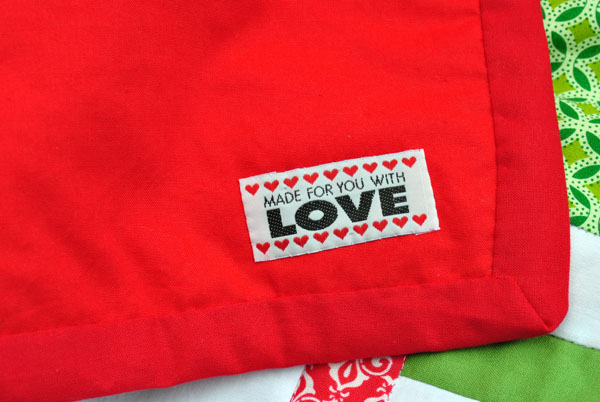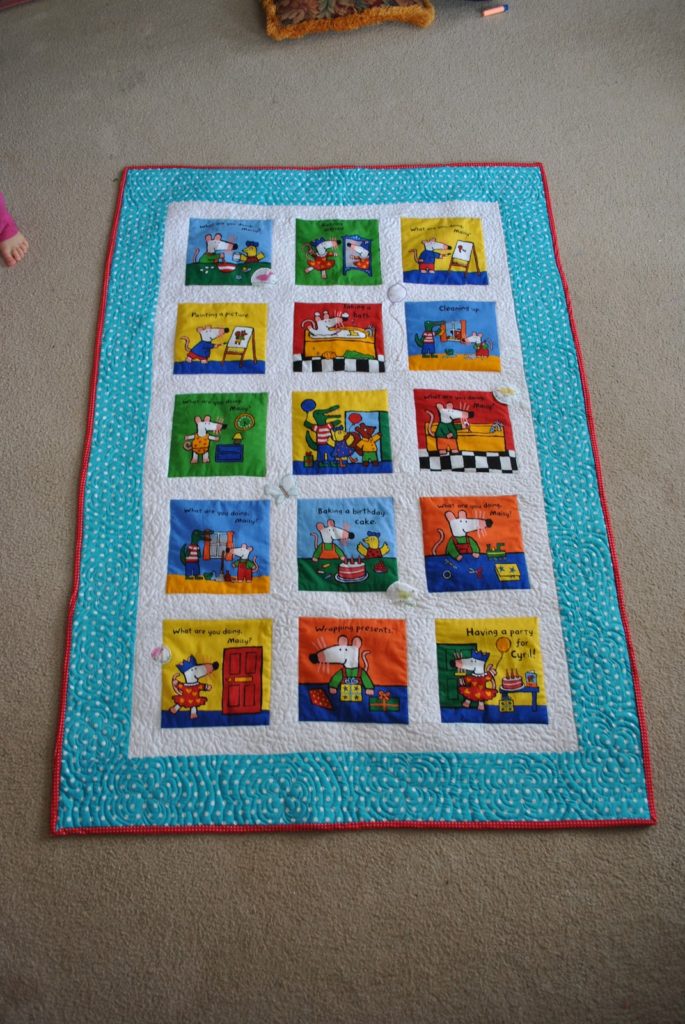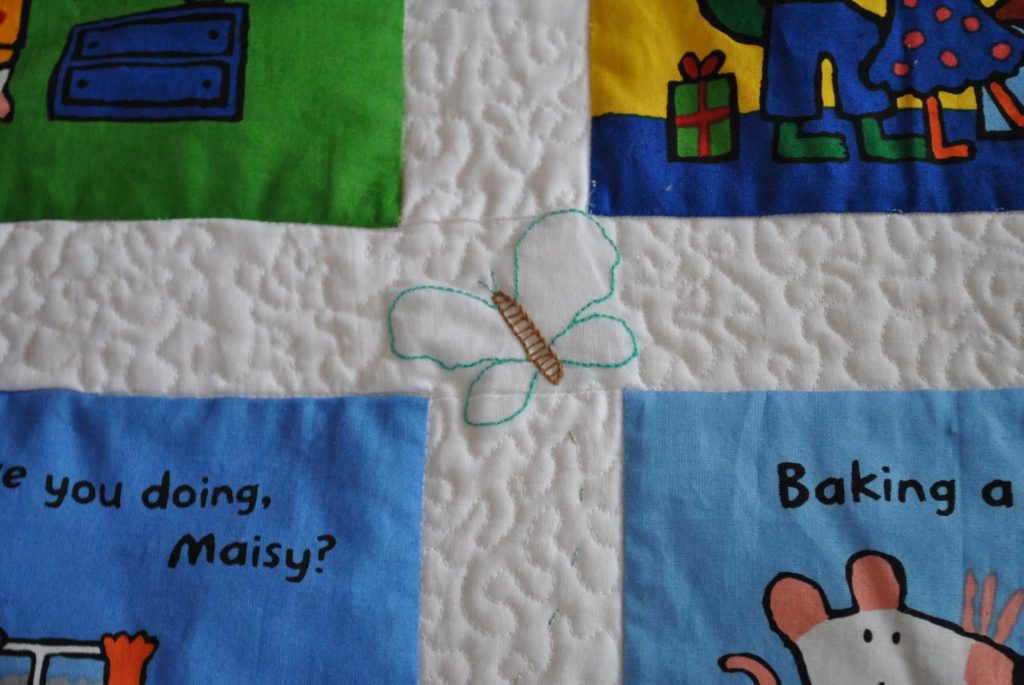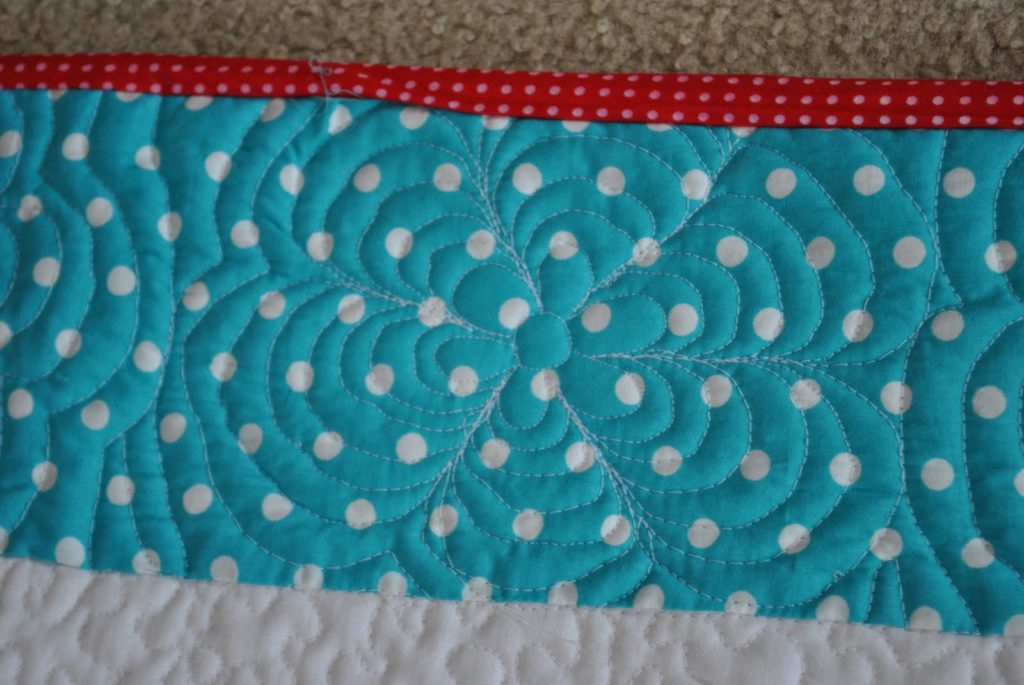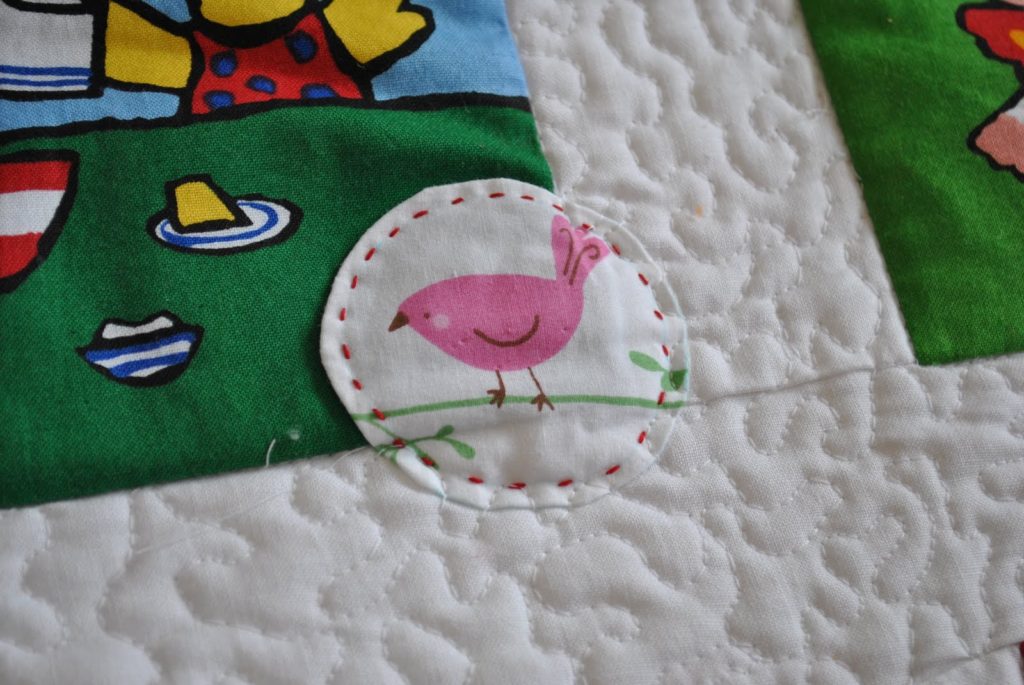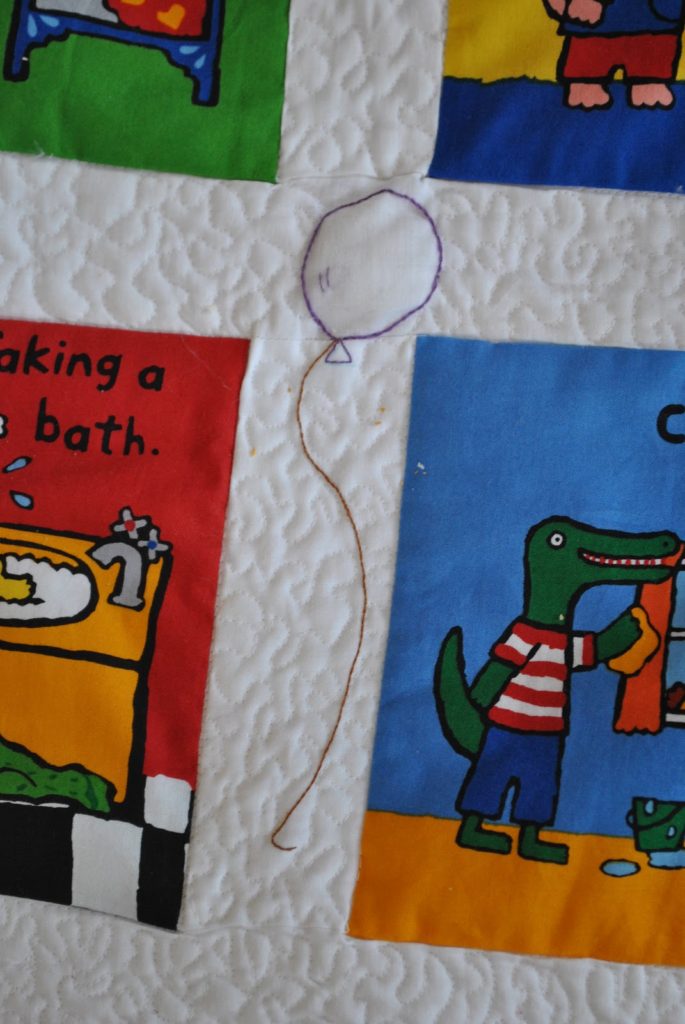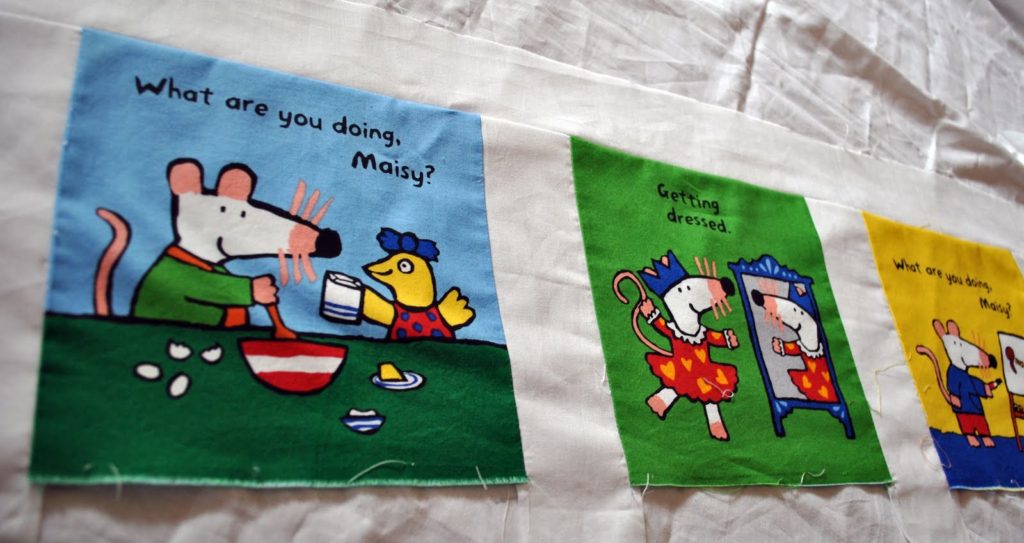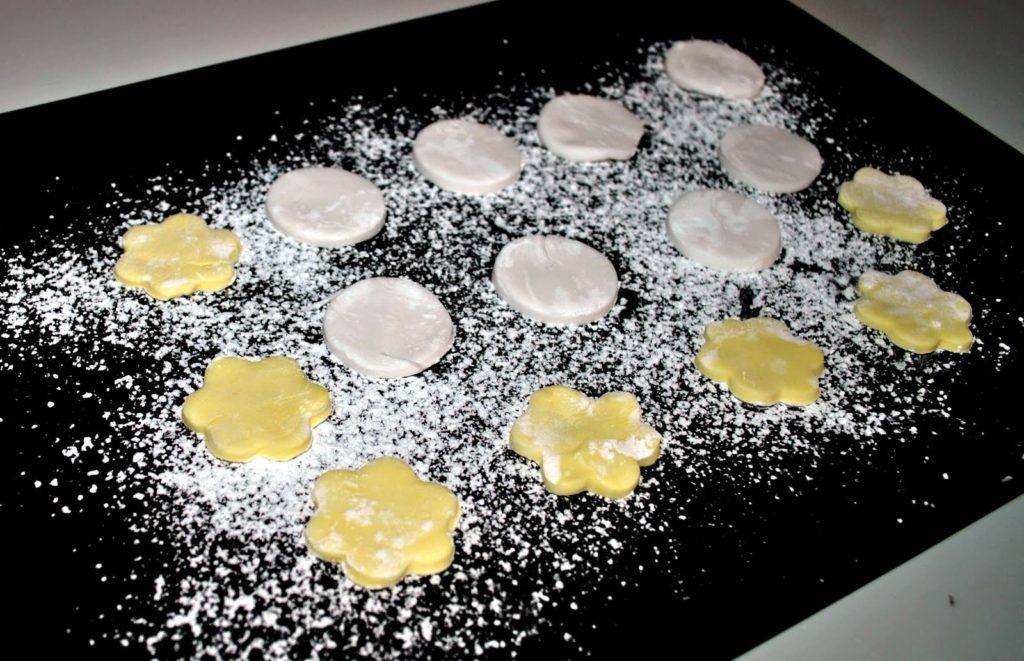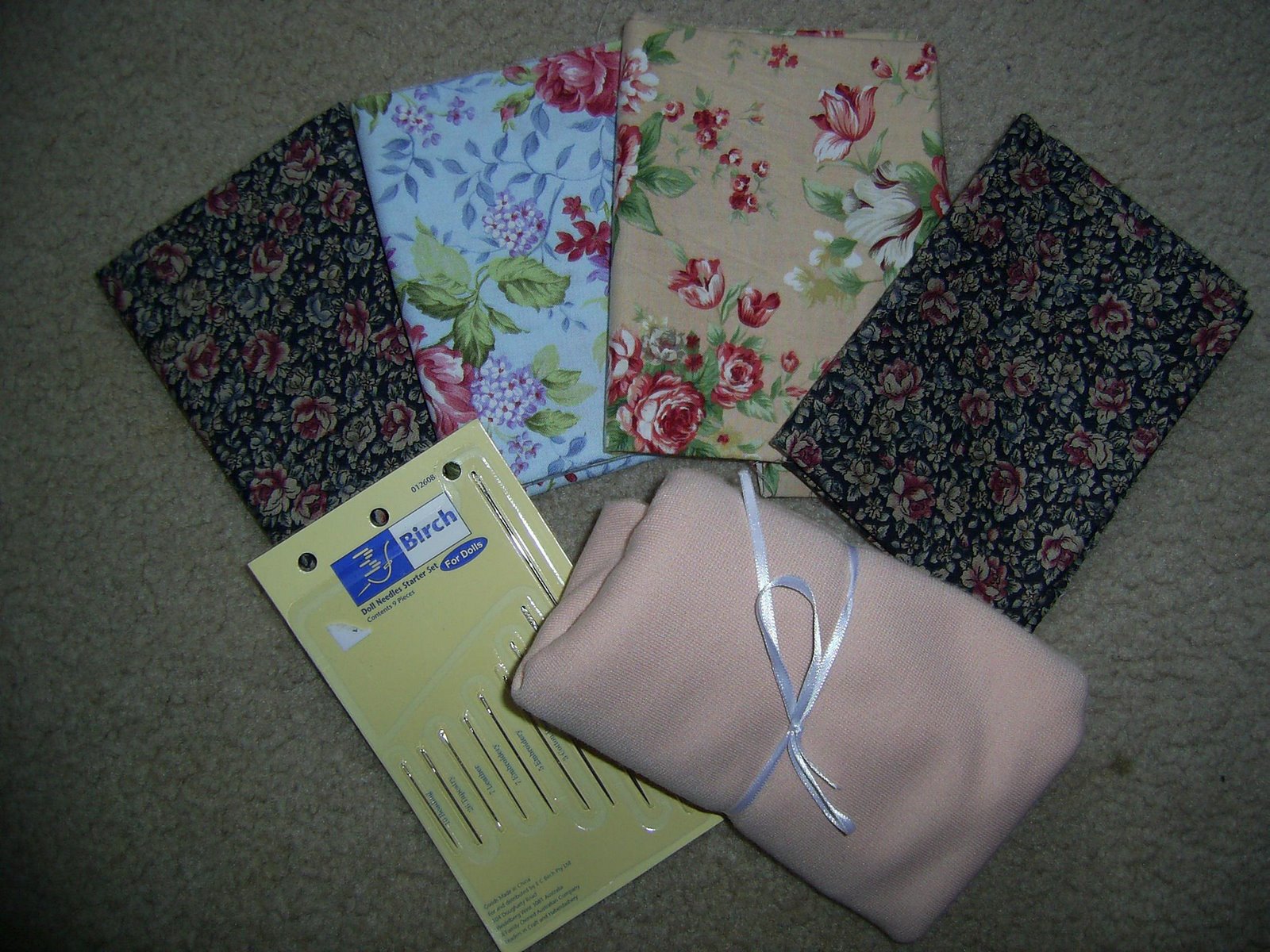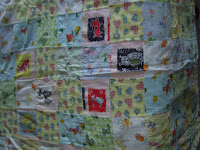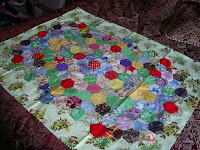Search Results for: quilt
Maisy quilt
Quilts and sugar paste
I’m experimenting with sugar paste and am quite taken with Mich Turner’s work, so lets see what I can do with Easter just around the corner.
Don’t forget to enter the “Pay it forward giveaway” which ends Saturday.
Thanks for dropping by!
The Craft and Quilt Fair and handling rejection
I was really excited about attending the C & Q Fair so perhaps my expectations were too high. The last time I went was 2 years ago and basically nothing much has changed. I did make a few purchases that I’m happy with, but as far as inspiration goes the fair did little for me. I guess by going on the last day you would expect some frayed tempers and tired stall holders – I know I would be.
And now to rejection. Yes, I’ve just had another magazine rejection which leads me to contemplate whether anyone is actually interested in what I do, whether I should be bothering to do this design course, whether I should be thinking I can make it as a designer / artist / craftist?!!
Rejection sure does hurt, but I know I’ll get back on the horse – what else can I do? I love to design, I love to make things and I love the artistic skill involved in what I do. So, even minus the accolades I will keep on doing what I feel driven to do.
How do you handle rejection?
Winnie the Pooh quilt
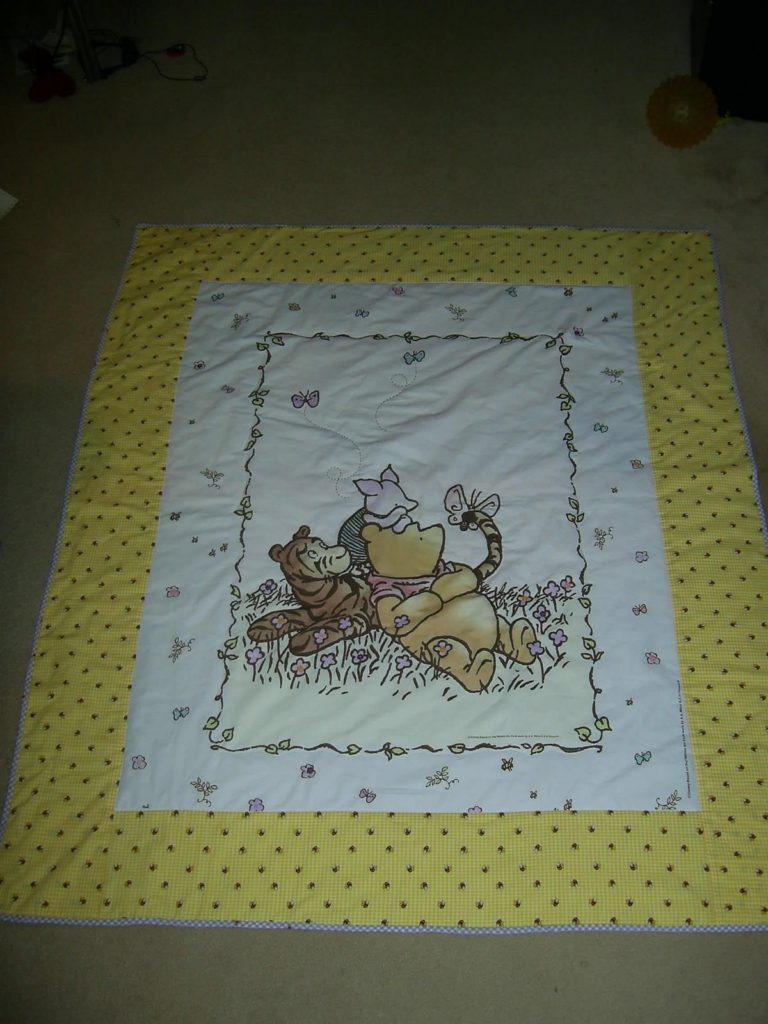 I had this Winnie the Pooh cot panel in my stash for so long….
I had this Winnie the Pooh cot panel in my stash for so long….
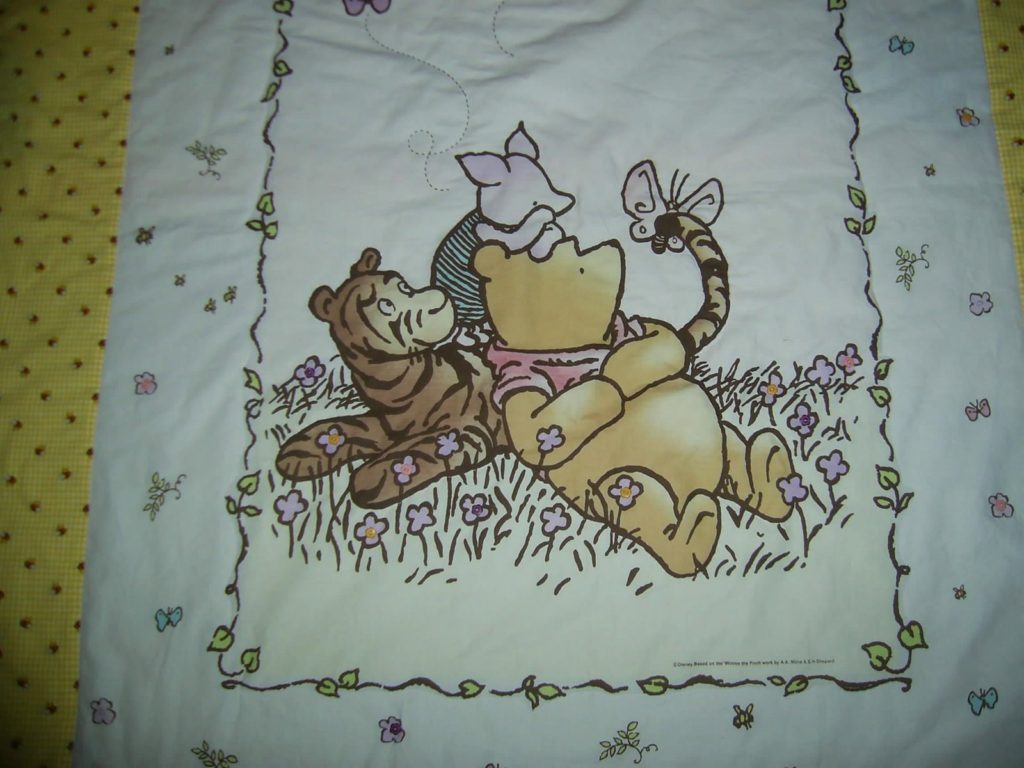 I selected some matching fabrics from the Spotlight clearance table (including the backing which is a beautiful soft and warm pink baby flannel)…..
I selected some matching fabrics from the Spotlight clearance table (including the backing which is a beautiful soft and warm pink baby flannel)…..
Craft and Quilt fair
I dragged my sister along on Saturday, I thought it would be busy, but wow! I’m not usually one for group situations so I didn’t really enjoy being bustled around in a massive crowd. I did however, enjoy looking at the stalls and so many fabrics! I was very good and didn’t buy much, I think I was a bit overwhelmed by choice and didn’t want to get carried away. I loved the Katkins Designs stall and Karlene was lovely to deal with. Her dolls are inspirational and I finally got a turning tool which will enable me to make small dolls.
We had a real frost here this morning, I’ll have to inspect the garden for damage. It was so cold my hands hurt drying off lastnight’s metal cutlery from the drying rack. We’re off to the doctor this morning for the dreaded immunisations, one of my least favourite tasks as a Mum.
Old quilts
49 Weaving Project Ideas
Feeling a little stuck for ideas for your next weaving project?
The options are almost unlimited, but here are 49 weaving project ideas to get you started!
Whether you’re weaving on a rigid heddle loom, a table loom or a floor loom you are sure to find these weaving project ideas super helpful.
Weaving a scarf is the perfect starting point for the new weaver.
It’s a narrow piece, which makes it easy to tension. It’s a long warp, but not so long as to be likely to cause any real issues. And once you’re done weaving and wet finishing, you have a completed woven piece, ready to wear.
That is so rewarding and empowering to the beginner weaver!

Once you’ve completed your first scarf, you may want to build on that success and hone the skills you learned by weaving another. Great! Another beautiful scarf to wear!
What is next? Another scarf? Well, I guess you could either add to your scarf collection or start giving them as gifts. Some weavers will continue weaving scarves until they have so many they’re not sure what to do with them. That could be a time to start selling for some extra income, if that is something you are interested in.
But not everyone wants to continue just weaving scarves for the rest of their weaving lives.
I often see weavers chatting and asking questions online, wondering if there is anything beyond the humble scarf.
Well, rest assured, there are SO many things you can make as a weaver!
Once you take up weaving, you become a maker of cloth. In quite a magical way, you are able to produce your own fabric.
You can either choose to weave an item that is basically finished when it comes off the loom, or you can use your hand woven cloth as a stepping stone or starting point for something else.
If you have, or can learn basic sewing skills, you are well on your way to creating unlimited projects with your handwoven fabric.
Here is a list of ideas to get you started:
Scarves (obviously! 😉)
Shawls
Bags (totes, handbags, shopping bags, carry bags)
Rugs
Wallhangings and tapestries
Blankets
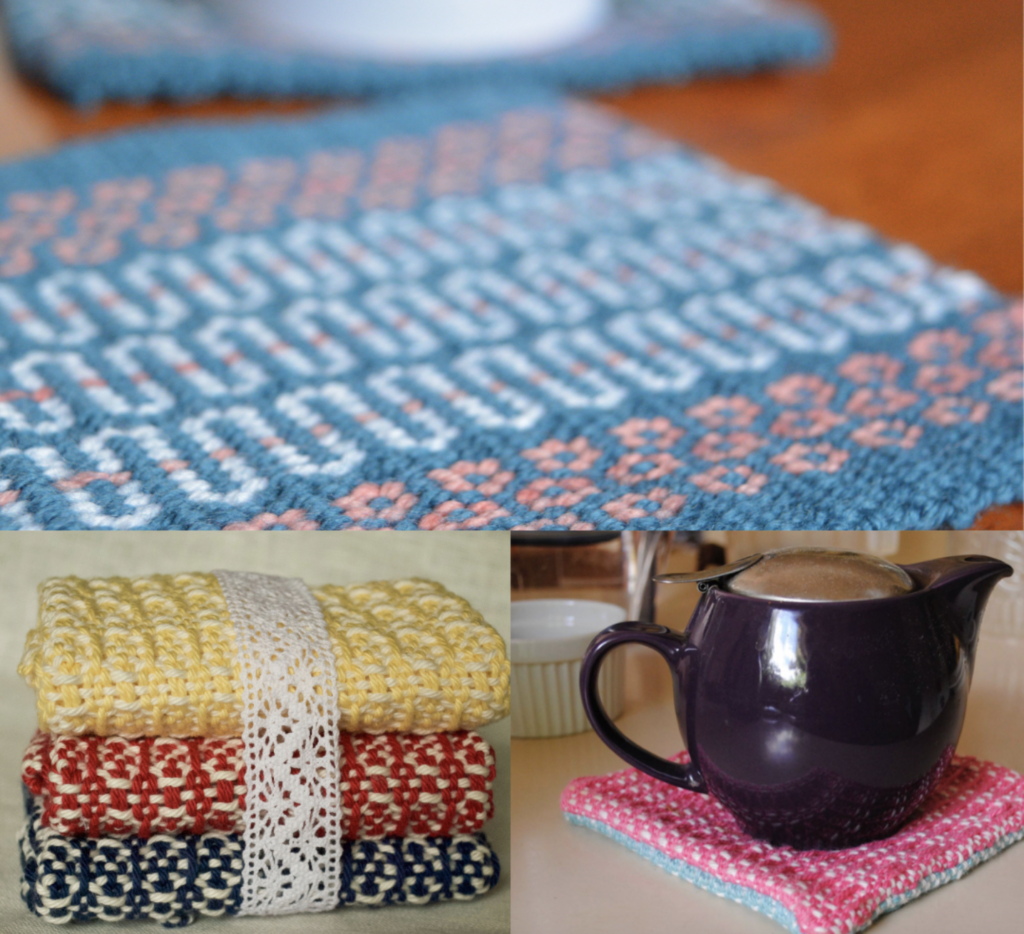
Pillows/cushions
Purses/ pouches
Kitchen, bath and hand towels
Face washers
Apron
Book covers
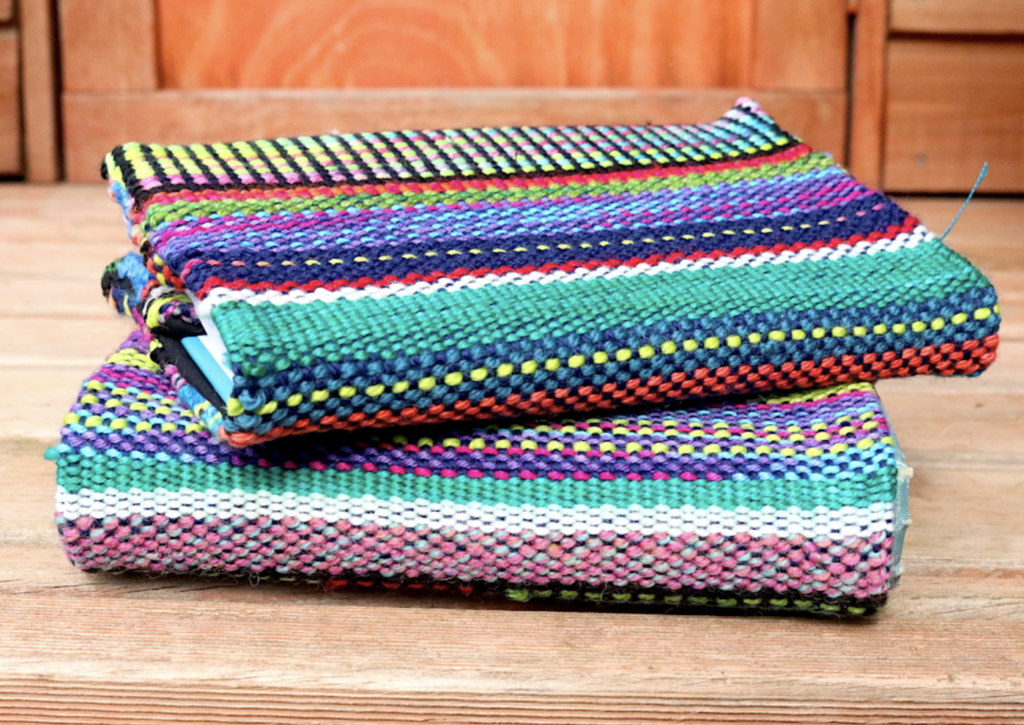
Bookmarks
Kitchen cloths
Soft toys
Ponchos
Jackets
Tops

Skirts
Dresses
Pants
Coats
Framed art
Lampshade covers
Loom covers/bags
Upholstery fabric for unique furniture pieces
Historical re-enactment costuming
Hats
Jewelery
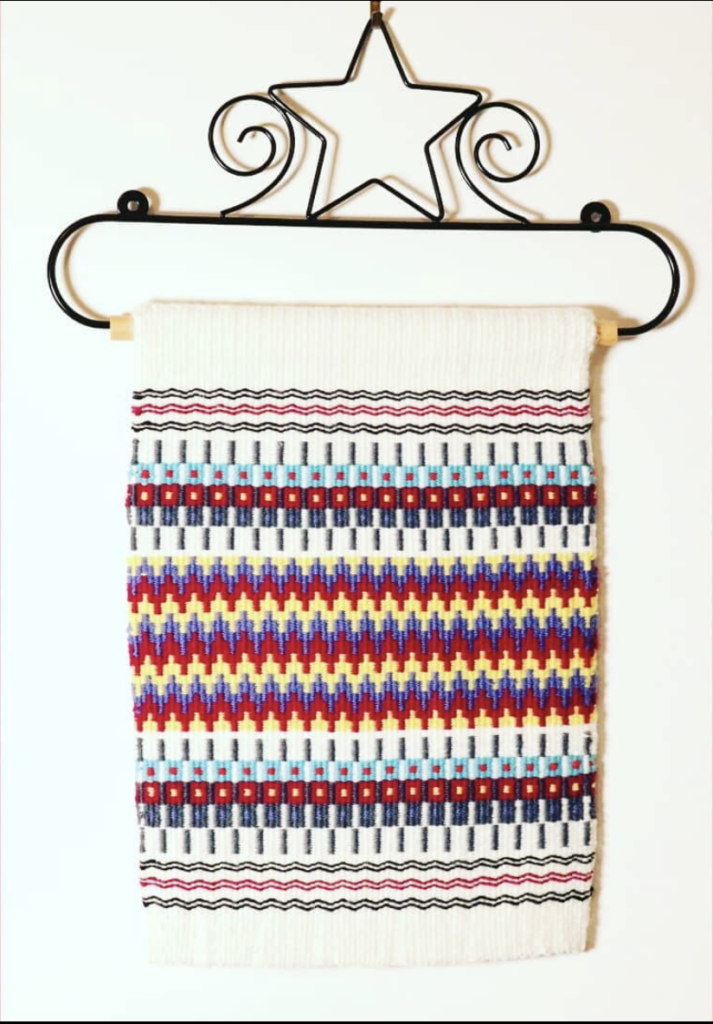
Baby wraps, carriers and blankets
Drink coasters or mug rugs
Curtains
Patchwork and quilting projects
Hair accessories/ head wraps
Saddle blankets for horses
Dog beds, coats
Potholders/trivets/oven gloves
Dining table ware – table runners, place mat sets
Bedding – throws, coverlets, pillow covers, blankets, quilts
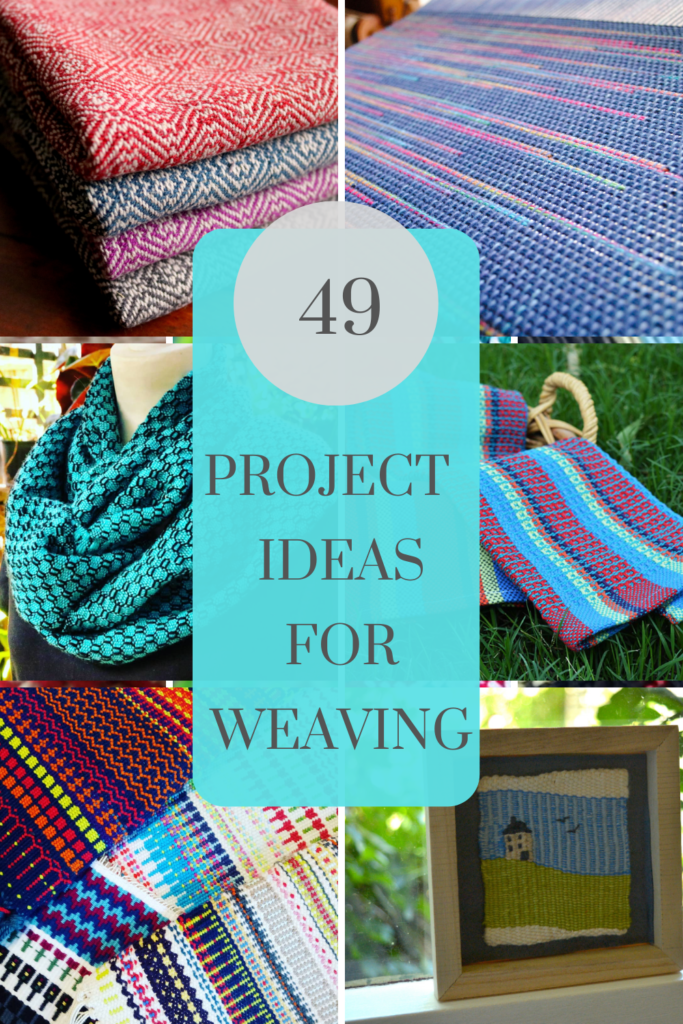
Well, what do you think, have I convinced you that you can weave more than just scarves with your loom?
If you’re looking for some free projects to get you started, check out my Free Projects list and be sure to check out my Youtube channel for even more ideas and tutorials. My design store contains my original project designs as digital downloads as well as my ebooks.
At the Online Weaving School you will find many classes to choose from, and as most of my lessons are project based, you can often complete a finished woven item.
So, as you can see, the possibilities for woven projects is really unlimited! Please add your own ideas in the comments to share with other readers.
Until next time…
Happy Weaving!
5 Life Lessons from a Difficult Warp
I started my latest project full of enthusiasm and confidence.
I often feel at the beginning that whatever I’m working on is going to be my best piece yet. This is an important motivating tool for me and I’m sure that many of the projects I’ve undertaken would not have come to life without this initial confidence.
You could say that I felt super confident going into this new project. Experience with the weave structure? Check! Experience with the yarns? Check! Experience with the loom? Check, check, check!!
- This post contains affiliate links. For further information, please see my disclosure policy.
I thought I was cool with the long and wide warp. First mistake!
I should have asked someone to hold the warp for me so I could focus on winding it on. But no, being the “independent to my own detriment” kind of person that I am, I forged ahead alone.
Let me share some more details about this project. Those of you who have been around here for a while will be familiar with my bordering on obsessive desire to weave a full sized overshot coverlet, heavily influenced by the early American Woven Coverlets.
My main stumbling point to weaving my own coverlet is the seaming. Traditional coverlets were woven in panels, usually 2 or 3, then joined. Most looms were not wide enough for the full piece, and my 90cm width Louet David is no different.
The threading for the panels has to be arranged to be able to match up when the seams are joined. This usually consists of a centre panel and 2 panels either side (if weaving 3 panels). Then the seaming method has to be chosen with the view of minimising visibility – a really good coverlet weaver will have almost invisible seams.
Another essential aspect of successfully seaming the panels is to ensure a very consistent beat so that the pattern woven is continuous once the panels are joined. That means measuring picks per inch, something I’m not particularly fond of doing.
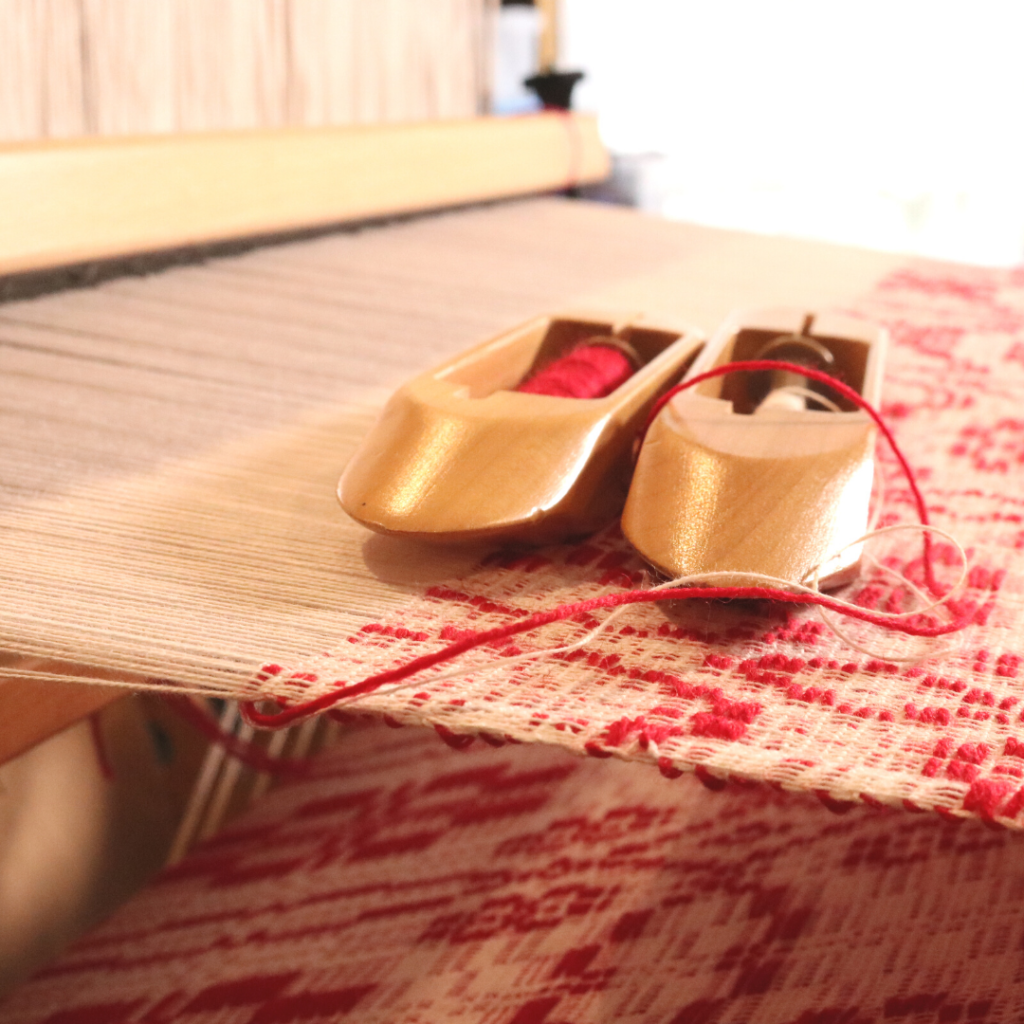
So, my idea was to weave just one panel and to practice rearranging threading and weaving a pleasing pattern. I even had the thought initially that I could use the panel to cut into pieces and make a patchwork quilt. I’m not sure the pattern lends itself well to a quilt, but I’m not too fussed about that. I will decide what to do with the piece once it’s off the loom.
For my warp I chose 8/2 cotton in white. I have a lot of experience with this yarn and have used it extensively in other overshot projects. Normally I pair it with a fingering weight wool for the pattern weft, but this time I decided to try Australian 3ply, which is in between a lace weight and fingering weight. In retrospect, I would have been better to sett a little closer than the 20 ends per inch I chose. There is more space between pattern wefts than I would like.
I found the weaving draft in Carol Strickler’s book “American Woven Coverlets”. I made some adjustments to the draft with plenty of calculations. Yet, when it came to the threading, I found that my warp was 16 threads short! I measured out the extra threads and weighted them over the back of the loom.
After threading and sleying the 650 ends I was looking forward to weaving! But my less than ideally tensioned warp came back to bite me at this point. I had to take the initial weaving very slowly to avoid floats and boat shuttle warp dives.
Initially I felt quite angry about all this. The project was meant to be a happy and relaxing experience. It was supposed to help me progress in my coverlet ambitions.
As I sat there weaving today, I started to think. The anger had subsided to disappointment, and that put me in a reflective mood.
There are so many life lessons in weaving. Challenges, frustrations are all part of the process.
I wanted to share some of my reflections from working on this piece.
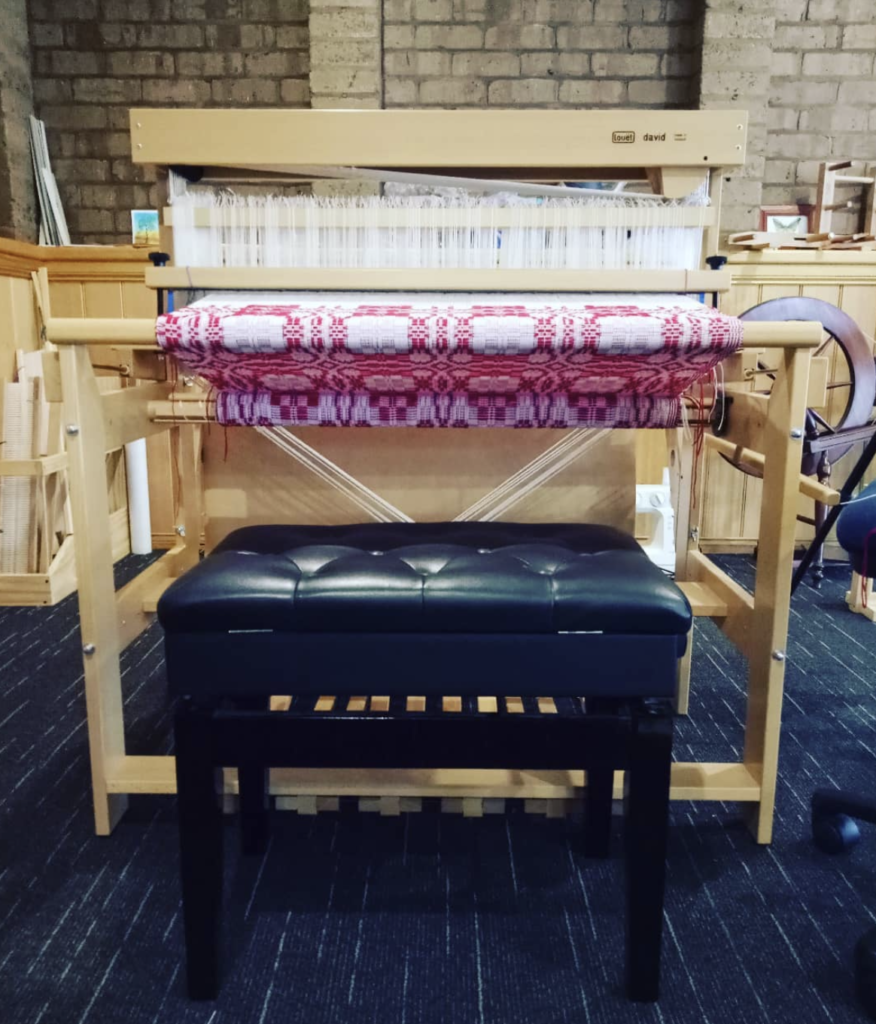
Lesson 1 – Things don’t always go according to plan and that’s OK
I once heard someone say “you expected ABC and you got XYZ”. I expected this to be a fun, rewarding project, but it was harder than I thought. It’s my reaction to the unfulfilled expectations that matters. The problem is not the problem, the problem is how I deal with the problem!
You’ve probably heard me say before that there is no perfection in this world. That doesn’t mean that we shouldn’t strive for high standards and excellence, it just means that we should have more hope than we do expectation.
Lesson 2 – Accepting responsibility
My first reaction was to lay blame elsewhere or make excuses. I was tired, I was rushed, I didn’t want to bother one of my family members to help me, I thought I’d be fine to do it myself. While there may be some truth to some of these elements, ultimately it is my project and my decision making lead to a warp that wasn’t adequately tensioned and is now causing me more difficulties in the weaving process.
I have to accept that responsibility and work to overcome and undo the problems that I made.
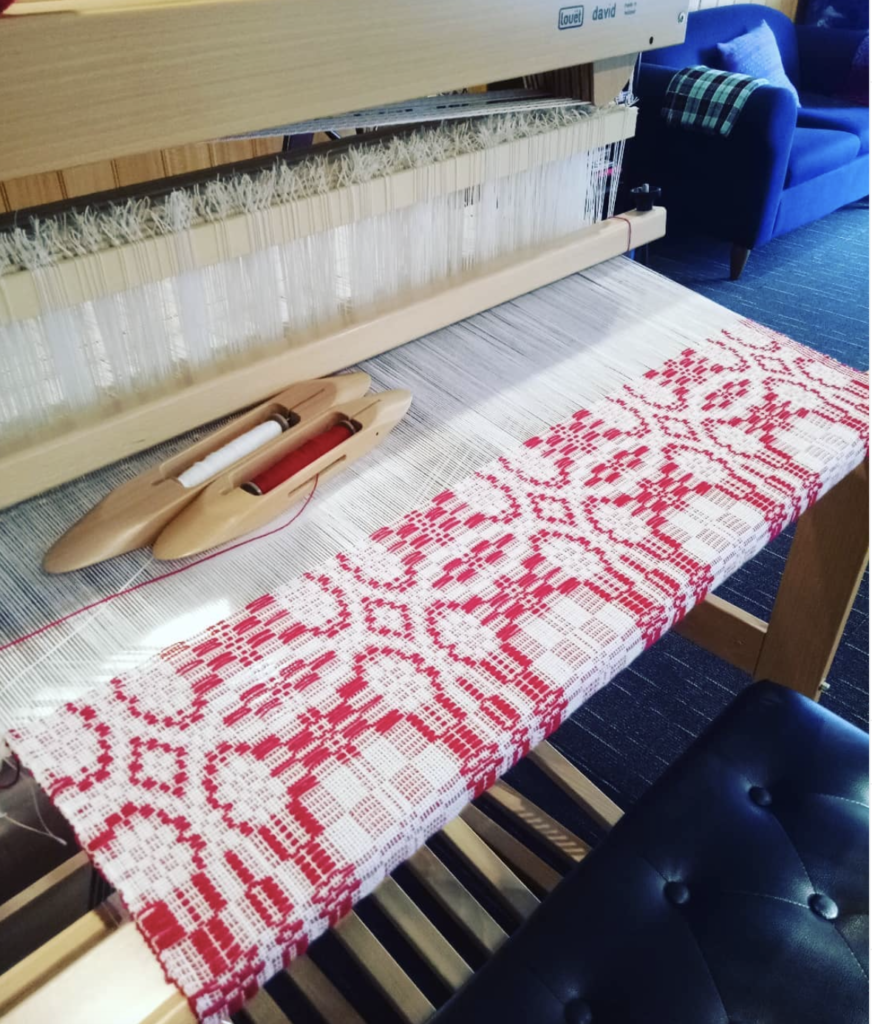
Lesson 3 – Patience and persistence pay off
I could have given up on this warp. But aside from not wanting to waste all that beautiful cotton that I had paid for, I also didn’t want to let the project defeat me. I know from past experience that if I give up on a project I will feel far worse than if I decide to battle through it.
I guess I have a bit of a stubborn streak, but in weaving that works for, rather than against me. Because it forces me to do uncomfortable things. Things that make me angry and frustrated. If I stop at the angry stage, then I’m suspended in that anger and negativity. If I keep going, I’m forced to work through the frustration and come out the other side, much happier and with a sense of satisfaction that even though it was hard, I did it.
Beautiful things are such a treasure that they should take time and shouldn’t necessarily be easy to achieve. They are worth the time and the effort.
Lesson 4 – Learning is a journey
Learning to weave is a journey of stepping stones, walking, then running, but never stopping and sitting down. The journey is every changing and building. Just as life is a constant striving to be better that doesn’t finish. You don’t just wake up one day and say “now I’m the person I should be”. You wake up and prepare to work and practice all the good things you know will make you better. And you repeat that each and every day, building, changing and adapting.
There may be a tendency in weaving to feel like you should know more by now, you should be producing perfect pieces by now. Instead, try to recognise and enjoy the journey and keep building everyday. I’ve talked about Slow Learning before, you can check out this video to learn more-
Lesson 5 – Adversity is good for us
This is one of those hard life lessons and not one that everyone will agree with me on. But if we spend our whole lives being pampered, having it easy and getting what we want, when we want it, we become soft and spoiled.
Difficulties help us to build character. They allow us to develop empathy. They make us strong. We don’t like hardship, because it doesn’t feel good – but that doesn’t mean it isn’t good for us.
This challenging project has certainly been good for me. Right now, I’m at a better place with it, slowly weaving (slower than I would like, but that’s just how it is) and making adjustments as I go. I feel at peace with my progress. I’ve gained confidence that I can deal with pretty much anything my loom throws at me.
I would still rather that this was the easy and enjoyable project that I originally envisioned, but I’ve shifted to a place of gratitude.
I am grateful that:
- I have a loom and can use it
- I have supplies to weave with
- I can figure out how to fix things when I need to
- I have the time to devote to this wonderful craft
- Most of the time, I end up with a beautiful piece of weaving
And lastly, that I learn so much more from weaving than just how to weave.
If you would like to see this post in video format (and see me weaving the project itself!) please click on the video below.
Now it’s over to you. What life lessons have you learned from weaving?
Please share your thoughts or comments down below, I love to hear from you!
Until next time…
Happy Weaving!
Crazyshot Book Review and Giveaway
Myra Wood is a well known fibre artist with an impressive array of artistic skills and talents. In fact, I’m quite amazed by all her achievements in teaching, writing books and creating. She is a huge inspiration!
*This post contains affiliate links. For more information, please see my disclosure policy.
Myra has just released a wonderful new weaving book that I am so excited to tell you about – “Crazyshot! Creative Overshot Weaving on the Rigid Heddle Loom”. “Crazyshot” is creative overshot weaving for the rigid heddle with bold patterns and colours.
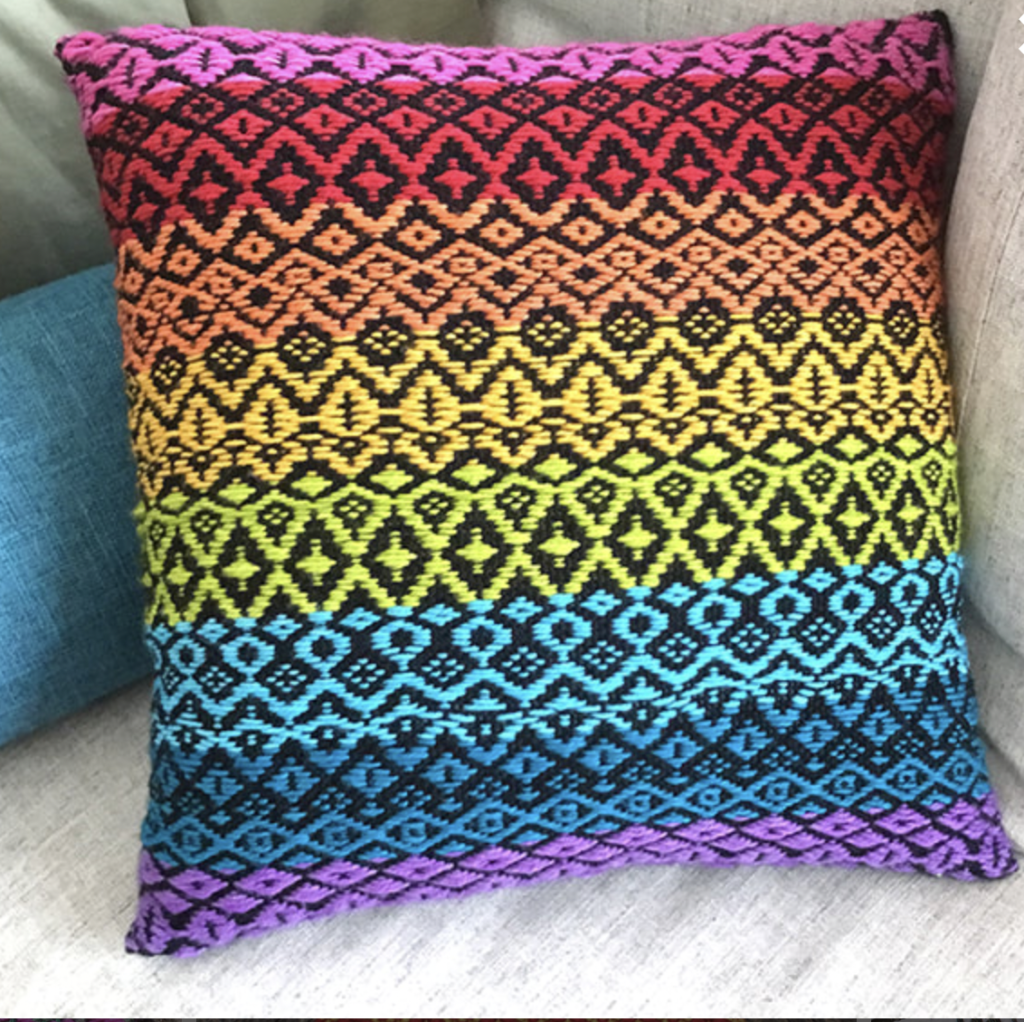
The book provides beautiful colour photo, step by step instructions and explanations. The patterns look extremely complex and yet are achieved with just one heddle and one pick up stick! There are 14 stunning projects included.
You may be thinking “this looks way too advanced for me!”, but that is the beauty of it. All you need is the basics, plus a good dose of patience and an adventurous attitude.
Let’s have a chat with Myra and find out more about her and how the new book came about.
Tell us a little about your background in fibre arts.
“I was a pretty crafty kid. My mom taught me how to sew and crochet and we made tons of Barbie doll and kid’s clothes. I continued crafting through adulthood, adding new crafts every couple of years- more sewing, quilting, embroidery, tapestry and bead weaving, tatting, you name it, always with an emphasis on creative expression. In 2003 I started teaching knitting classes at a local yarn store and within a couple years I began teaching knitting and crochet on the US national circuit for XRX/Stitches, Vogue Knitting, guilds and special events. Along the way, I taught 5 classes for Craftsy and wrote 3 books and published lots of patterns. Up until Covid, I was traveling around the US almost every month. ( I don’t miss the airports but I do miss seeing everybody in person).“
When and how did you first become interested in weaving?
“In 2012, I saw my first rigid heddle loom at a trade show and had to have one. I dove right into the deep end buying a 20” with a stand while I was there and all the rigid heddle books I could find. Needless to say, my yarn stash was already a bit ridiculous so when I found out I could use the same yarns I was ready to go. My loom arrived a couple weeks later and it’s been a love affair ever since. I now own 4 rigid heddle looms, all of which are usually warped with some experiment or another.“
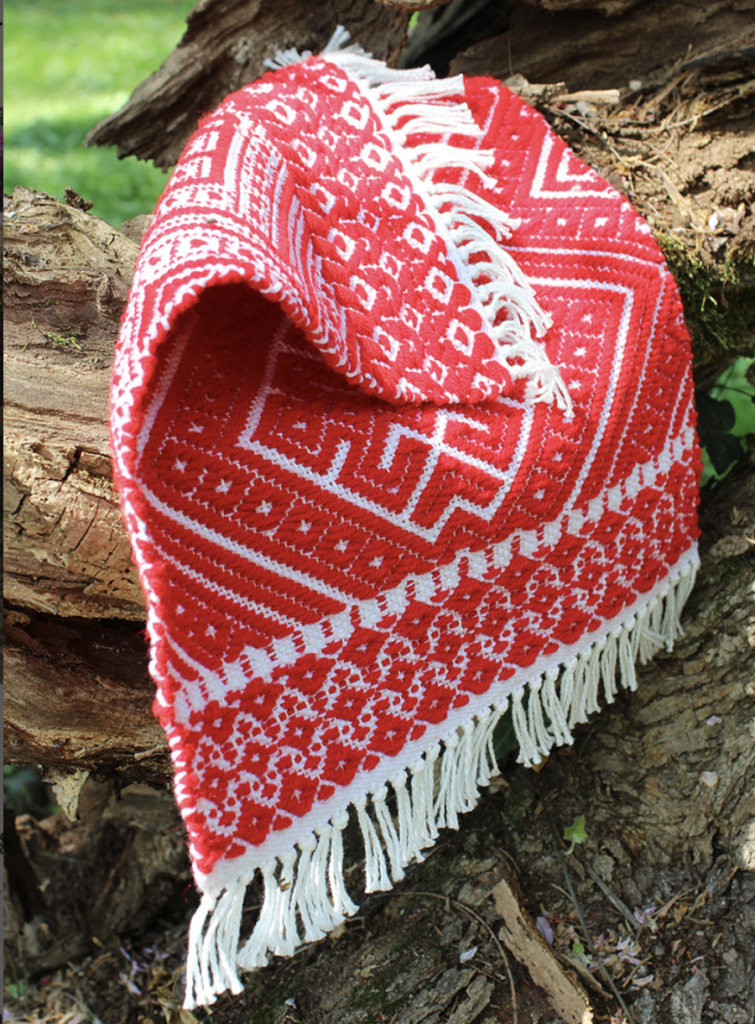
Crazyshot is not the first book you’ve published, but it is your first weaving book. What was the inspiration behind the book?
“In all honesty, your Branoe class blew me away. I kept thinking about Fair Isle and Mosaic knitting and other charted needlework while I was learning. I looked for more info on Branoe and found very little but I did discover a rich history of supplemental weft weaving from all different cultures throughout time. So I started experimenting and this book is the result of combining lots of different ideas from various charted needlework. Many times my books have come out of wanting to see the book I wish was already out there.“
Something that students often ask me about is how to choose colours for a project. I noticed that in “Crazyshot” your project colours are strikingly beautiful and harmonious. Do you have any tips for those who are nervous combining and choosing colours?
“Absolutely! I love color and I’m not afraid to use it but lots of times I find myself in color ruts. Give me some blue, green, aqua and purple yarn and I’m off to the races. When I want to step outside my comfort zone, I like to take a skein of a long color repeat yarn like Noro Kureyon and match up all the solid colors I have in my stash to the colors in the yarn. The dyers are very experienced with color and often put together colors I’d never think of combining. I’ve also used variegated yarns to start with and even printed fabrics I love. Color is the most essential element for me so before I start any project, once my colors are chosen, I stick to that palette. I always say you have to love the colors together before you start or you won’t like the end result. I always start with color.“
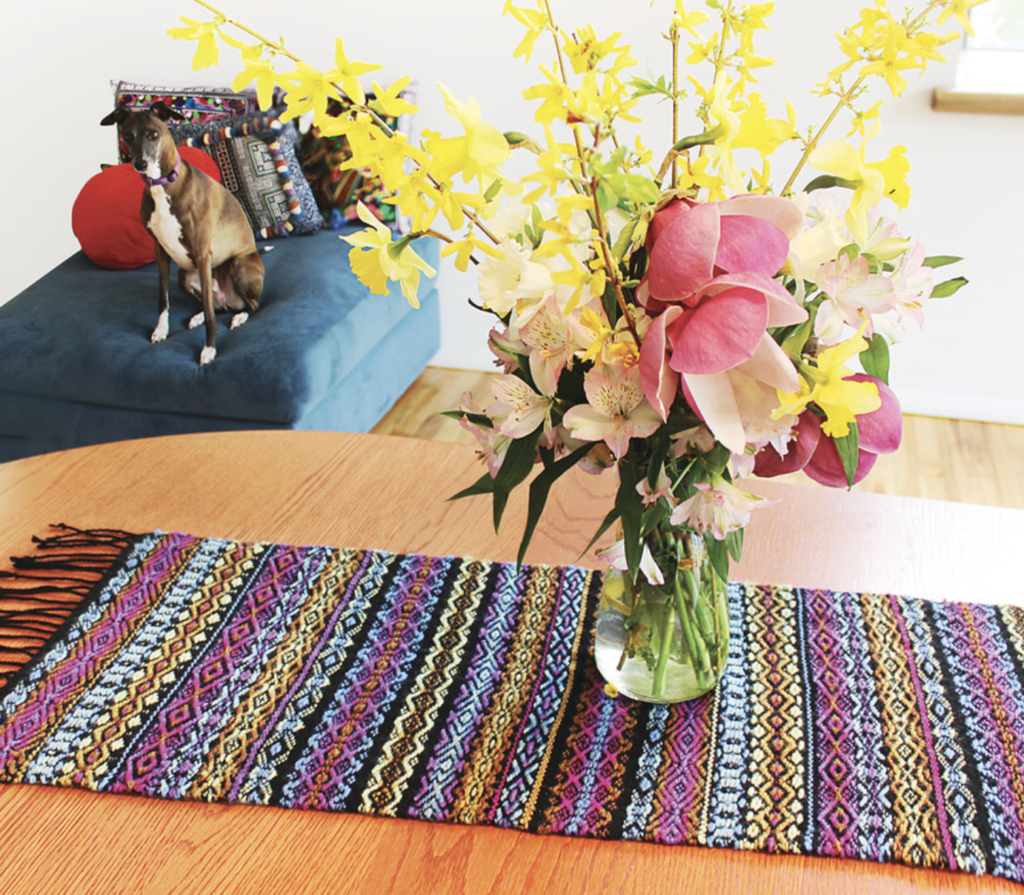
With all of the creative pursuits you are involved with, how do you organise your time effectively in order to achieve such variety?
“I tend to get fairly obsessive about one craft at a time. I’m passionate about learning as much as possible and experimenting with all the different ways I can express myself with it.
Eventually something else strikes my fancy and I abandon the previous one for the latest obsession. Many times I’ve rediscovered my love for a particular craft years after I thought I was done with it. I feel like I have a great toolbox to work with and I love combining ideas from different crafts.
I’m so lucky to have a dedicated studio and spend my days in it from morning till night. (I told you I was obsessive). As I’m aging, I find I can’t spend the hours I used to working with my hands before they start aching so I try and take breaks and do other things like clean the house and exercise. I did say try. I spend more time reflecting and relaxing now but my wheels are always turning with new ideas so I’m actually planning another book already!“
********************************************************************************************************************
And now for some more exciting news. Myra has one signed print copy of “Crazyshot” to gift to one of you lucky readers!

To enter, leave a comment below telling me what appeals to you most about this technique.
- THIS GIVEAWAY IS NOW CLOSED. CONGRATULATIONS TO CATHY MURPHY! THANK YOU TO ALL WHO ENTERED.
You can purchase “Crazyshot” in either digital or print version from Amazon or from Myra’s website.
If you would like a video course on the Branoe technique, check out my Exploring Branoe course at the Online Weaving School.
I also have some free videos on Youtube to help get you started:
Until next time…
Happy Weaving!



